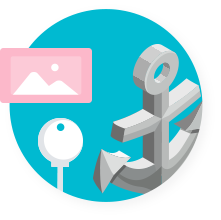Do you want to be an SEO Ninja? Of course, you do!
Do you know about the SEO basics like Anchor Text?
If not, you’re in big trouble!
Often, we have seen people hyperlinking random texts without having the slightest knowledge of why they’re linking that text!
People know they want backlinks and that’s why they hyperlink any text that comes before their eyes.
Well, that’s not how the SEO world revolves. You need to be logical and strategic in every step. Otherwise, you’re going to taste the failure.
Fortunately, we’ve come up with the most detailed anchor text guide on the internet that will help you understand the WHAT, WHY, WHEN, WHERE, and HOW of the anchor texts.
With our impending tips and tricks, you’ll learn the safe and trendy anchor text strategies that will let you rank higher without being spammy and facing Google’s wrath.
Here’s how it goes…
Index
Ready to Roll? Let’s go…
Anchor Text Basics

Anchor Text is a vast subject that needs detailed knowledge.
That’s why you need a basic knowledge of the subject before getting on with the complex and advanced aspects.
Here, in this chapter, we are going to learn the following:
- 3.1 What is Anchor Text?
- 3.2 Why is Anchor Text So Important?
- 3.3 Anchor text and Penguin update (before and after)
What is Anchor Text?
People are crazy about backlinks! Well, that’s fair, if we consider the power of backlinks for search ranking and traffic.
But most of these people don’t know much about anchor text!
That’s an issue! A major one!
Anchor texts define backlink and its effect. So, know about anchors before jumping to the links.
Anchor text is the word (or a set of words) that holds the link in itself. So, if something goes within your anchor text, the whole link building will go in waste.
The anchor texts, in general, looks something like this:
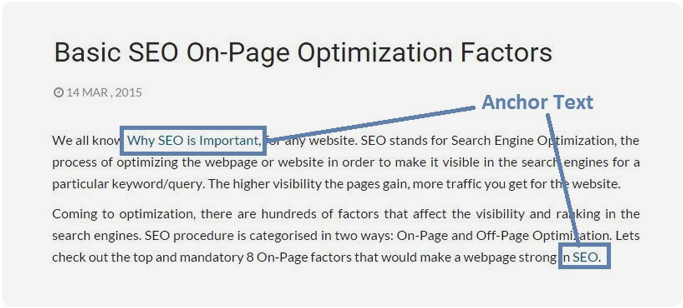
And the HTML format of the anchor text looks like this:
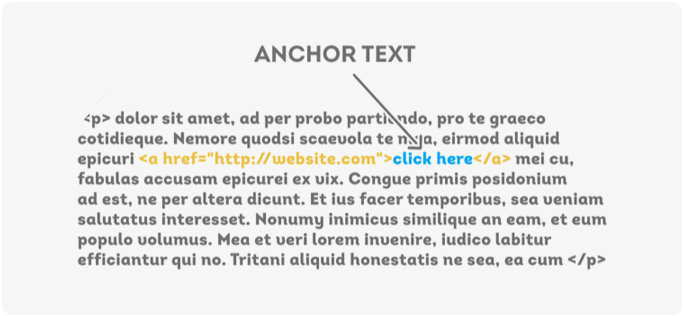
The above code is the part that will be visible to Google. From this code, Google will understand which anchor text leads to which URL.
So, as you can see, anchor text guides both users and Google where to follow next.
So, the better your anchor text is, the more profoundly you can assist your users and Google itself regarding the navigation process.
But there’re more profound reasons for coming up with a good anchor text other than guiding users!
Stay with us in the next chapter as we are elaborating the importance of anchor text…
What is Anchor Text?
People are crazy about backlinks! Well, that’s fair, if we consider the power of backlinks for search ranking and traffic.
But most of these people don’t know much about anchor text!
That’s an issue! A major one!
Anchor texts define backlink and its effect. So, know about anchors before jumping to the links.
Anchor text is the word (or a set of words) that holds the link in itself. So, if something goes within your anchor text, the whole link building will go in waste.
The anchor texts, in general, looks something like this:

And the HTML format of the anchor text looks like this:

The above code is the part that will be visible to Google. From this code, Google will understand which anchor text leads to which URL.
So, as you can see, anchor text guides both users and Google where to follow next.
So, the better your anchor text is, the more profoundly you can assist your users and Google itself regarding the navigation process.
But there’re more profound reasons for coming up with a good anchor text other than guiding users!
Stay with us in the next chapter as we are elaborating the importance of anchor text…
Types of Anchor Text with Anchor Text Ratio

We know you don’t want to face Google’s wrath and don’t want to be penalized for sure.
But in order to stay on the ethical track in the link building world, you should always follow a natural and white hat anchor text practice.
Unless you know about the different anchor text categories and types, you cannot decide which one to use where and how much.
That’s why we are here with the different anchor text types defined by different categories along with their ratios.
Read on…
- 3.1 Types of Anchor Text with Category
- 3.2 Anchor Text Ratio
- 3.3 Anchor Text Chain: Tier 1, Tier 2, and Tier 3 Anchor Text
Types of Anchor Text with Category
Just like link building, anchor texts are tricky as well!
You should pay close attention to the anchors you’re using; otherwise, your ranking will take a downward turn!
The right knowledge of the anchor text categories and types will let you build a natural anchor text profile.And guess what! You’ll be on Google’s good books.
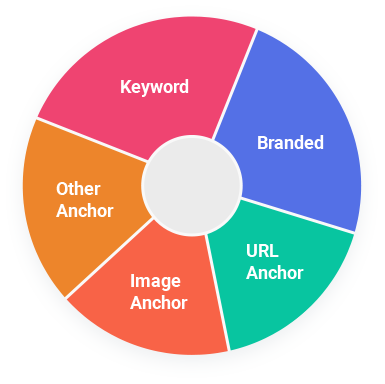
Category 1 : Keyword Related Anchor Text
Quite evident from the name itself, these are the keywords that will share a bond with the keyword you want to rank for!
For instance, if you want to rank for “cardio workout,” the keyword related anchor text would be “cardio workout,” or “Best Cardio Exercises” or “Benefits of Cardio Workout.”
All these anchors are somehow related to your keyword. Under the category of keyword related anchor texts, you will find a number of anchor text types that are mentioned below:
Title Tag
You can build anchor texts which are the exact same as the title of the page you’re linking to.
Example : “The 5 Health Benefits of Cardio Workout You Should Never Ignore” (Target Keyword: Cardio Workout)
Exact Match Keyword
This is quite simple: you build a link on the exact same keyword you wish to rank for.
Example : Cardio Workout
Note :This is also the most spammy type of anchor text. Google targets these sorts of anchors the most for penalization. Out of 100 anchors, 2-3 should be the exact match anchors, if not none.
Keyword + Word
You can also build backlinks on the anchors which have both your target keyword and some other words with it. It will reduce the chances for the anchors to be detected ‘spammy!’
Example : Find Out the Best Cardio Workouts (Target Keyword: Cardio Workout)
Part of Keyword
If you have a two-word keyword that you are targeting, you can also go for the partial keyword where you need to use a part of keyword as the anchor (the one that describes the service/product, of course!)
Example : Cardio (Target Keyword: Cardio Workout)
LSI Anchors
An abbreviation for Latent Semantic Indexing, LSI means the variations of your main keyword.
LSI is a known terminology for the webmasters since LSI keywords are used in content to make it keyword rich.
So, you’re going to use the LSI keywords as the anchor text, which will help you boost your ranking without even using the exact match anchors which are considered spam!
Example : Cardio Workout for Men, Best Gym Workouts, Workouts for Better Heart Health, etc. (Target Keyword: Cardio Workout)
But How to Find the LSI Phrases?
Search for your target keyword in Google and scroll down to the bottom to find the related queries as you can see in the picture!
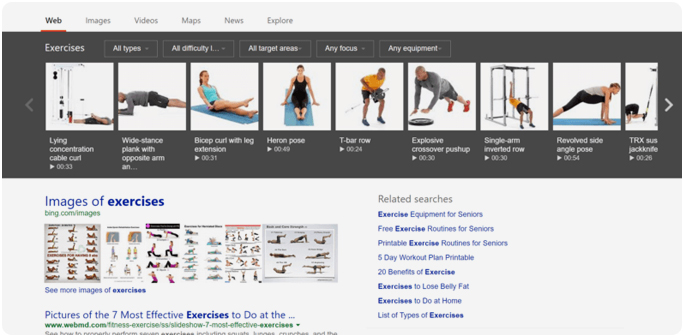
This is one of the simplest ways to explore the LSI variations of your target keyword and use them as the anchor text.
Category 2 : Branded Anchor Text
The next and probably the most important category for anchor texts, branded anchor text should be the most used anchor text of any website when it comes to link building.
Your branded anchor text will not only improve your link building profile and ranking but it will also let you build your brand online.
Branded Anchors
Branded Anchors are simply the brand name of yours. The branded anchors are the best way to build links naturally in the white hat way.
Example : Cardio Workout for Men, Best Gym Workouts, Workouts for Better Heart Health, etc. (Target Keyword: Cardio Workout)
Brand + Keyword
Including your brand name and keyword together can create a few anchors for you. However, don’t make a lot of them, that’s spammy! Yes, it’s not so simple!
Example : Digital Outreach’s Backlink Guide (Target Keyword: Backlink Guide | Brand Name: Digital Outreach)
Category 3 : URL Anchors
Other than the words or phrases, there’s another way to create your anchor text! That’s URL Anchors. These sorts of anchors would also create a nice anchor text profile on behalf of your site.
Below are the anchor types that fall under this category.
Naked URL (with and without HTTP/HTTPS)
In spite of hyperlinking a word or a set of words, you can put a naked URL (of your site or web page) as the anchor text. That naked URL can be put with or without HTTP/HTTPS.
Example : https://www.digitaloutreach[dot]net/backlink-guide/ www.digitaloutreach[dot]net/guest-blogging-sites/
WebsiteName.Com
This is another URL anchor that you may use for link building. But the only difference is it will not have any ‘www’ or ‘http/https.’ Take a look at the following example.
Example : Digitaloutreach.Net
Category 4 : Other Anchors
Other than the above anchors, there are more anchor types you can use in your favor.
However, they may not work in every case, considering today’s ranking landscape. But they can be a great assistance, depending on the business nature.
The other category can range from generic to sales anchors. And you should use them wisely as they have a very limited usage and benefits.
Generic Anchors
Generic Anchors are those phrases that work for every type of website. Being generic in nature, you can use the same phrases ubiquitously for sites of different niches and natures.
These anchors don’t work outstandingly well for boosting the ranking but they can be useful in a few cases, depending on the nature of the website or business.
Example : Click Here, Know More, View More, etc.
Sales Anchors
As you can already assume, these types of anchors are dedicated to sales.
So, if you’re an online store or somehow you sell through your site, these sales anchors can be a great way to boost your sales as well as ranking.
Example : Buy Now, Click Here to Buy, Buy iPhone X, Purchase More, etc.
Natural Anchors
Natural anchors are undoubtedly the best anchor types you can use for your site.
Natural anchors don’t focus on any keywords or brand or anything as such. They come up along with the context of the content where your anchor text is placed.
Most of the ‘non-purchased’ and ‘inartificial’ links will have the natural anchors since the third-party platform will link to your site as per the context without caring for your SEO benefits.
Example : Visit this Site, Best Guidance You Can Get, etc.
Category 5 : Other Anchors
The fifth and the last category is not related to text anchors like all the above.
You can go beyond the usual text anchors and create anchors on images of different sorts, which will be a relief from the boring and predictable chunks of texts.
But why image?
Because images attract way more eyeballs compared to texts. And an attractive image is more likely to get clicks rather than the usual texts.
So, image anchors help in ranking as well as website visit!
Image anchors can be of many types:
- Infographic Anchors
- Banner Anchors
- Image Anchors within an Article
Do you see? Anchors have more types than you could even imagine.
Before you start building links, make sure you analyze each of the anchor types and utilize them for your own benefits.
The knowledge of anchor texts would also save you from Google’s penalty of wrong anchor text usage.
But… In order to use anchor text safely, you need one more vital knowledge!
That’s the anchor text ratio!
Fear not, our next lesson will guide you to use anchor texts in the right ratio!
Anchor Text Ratio
Just like link building, anchor texts are tricky as well!
You should pay close attention to the anchors you’re using; otherwise, your ranking will take a downward turn!
The right knowledge of the anchor text categories and types will let you build a natural anchor text profile.And guess what! You’ll be on Google’s good books.

Category 1 : Keyword Related Anchor Text
Quite evident from the name itself, these are the keywords that will share a bond with the keyword you want to rank for!
For instance, if you want to rank for “cardio workout,” the keyword related anchor text would be “cardio workout,” or “Best Cardio Exercises” or “Benefits of Cardio Workout.”
All these anchors are somehow related to your keyword. Under the category of keyword related anchor texts, you will find a number of anchor text types that are mentioned below:
Title Tag
You can build anchor texts which are the exact same as the title of the page you’re linking to.
Example : “The 5 Health Benefits of Cardio Workout You Should Never Ignore” (Target Keyword: Cardio Workout)
Exact Match Keyword
This is quite simple: you build a link on the exact same keyword you wish to rank for.
Example : Cardio Workout
Note :This is also the most spammy type of anchor text. Google targets these sorts of anchors the most for penalization. Out of 100 anchors, 2-3 should be the exact match anchors, if not none.
Keyword + Word
You can also build backlinks on the anchors which have both your target keyword and some other words with it. It will reduce the chances for the anchors to be detected ‘spammy!’
Example : Find Out the Best Cardio Workouts (Target Keyword: Cardio Workout)
Part of Keyword
If you have a two-word keyword that you are targeting, you can also go for the partial keyword where you need to use a part of keyword as the anchor (the one that describes the service/product, of course!)
Example : Cardio (Target Keyword: Cardio Workout)
LSI Anchors
An abbreviation for Latent Semantic Indexing, LSI means the variations of your main keyword.
LSI is a known terminology for the webmasters since LSI keywords are used in content to make it keyword rich.
So, you’re going to use the LSI keywords as the anchor text, which will help you boost your ranking without even using the exact match anchors which are considered spam!
Example : Cardio Workout for Men, Best Gym Workouts, Workouts for Better Heart Health, etc. (Target Keyword: Cardio Workout)
But How to Find the LSI Phrases?
Search for your target keyword in Google and scroll down to the bottom to find the related queries as you can see in the picture!

This is one of the simplest ways to explore the LSI variations of your target keyword and use them as the anchor text.
Category 2 : Branded Anchor Text
The next and probably the most important category for anchor texts, branded anchor text should be the most used anchor text of any website when it comes to link building.
Your branded anchor text will not only improve your link building profile and ranking but it will also let you build your brand online.
Branded Anchors
Branded Anchors are simply the brand name of yours. The branded anchors are the best way to build links naturally in the white hat way.
Example : Cardio Workout for Men, Best Gym Workouts, Workouts for Better Heart Health, etc. (Target Keyword: Cardio Workout)
Brand + Keyword
Including your brand name and keyword together can create a few anchors for you. However, don’t make a lot of them, that’s spammy! Yes, it’s not so simple!
Example : Digital Outreach’s Backlink Guide (Target Keyword: Backlink Guide | Brand Name: Digital Outreach)
Category 3 : URL Anchors
Other than the words or phrases, there’s another way to create your anchor text! That’s URL Anchors. These sorts of anchors would also create a nice anchor text profile on behalf of your site.
Below are the anchor types that fall under this category.
Naked URL (with and without HTTP/HTTPS)
In spite of hyperlinking a word or a set of words, you can put a naked URL (of your site or web page) as the anchor text. That naked URL can be put with or without HTTP/HTTPS.
Example : https://www.digitaloutreach[dot]net/backlink-guide/ www.digitaloutreach[dot]net/guest-blogging-sites/
WebsiteName.Com
This is another URL anchor that you may use for link building. But the only difference is it will not have any ‘www’ or ‘http/https.’ Take a look at the following example.
Example : Digitaloutreach.Net
Category 4 : Other Anchors
Other than the above anchors, there are more anchor types you can use in your favor.
However, they may not work in every case, considering today’s ranking landscape. But they can be a great assistance, depending on the business nature.
The other category can range from generic to sales anchors. And you should use them wisely as they have a very limited usage and benefits.
Generic Anchors
Generic Anchors are those phrases that work for every type of website. Being generic in nature, you can use the same phrases ubiquitously for sites of different niches and natures.
These anchors don’t work outstandingly well for boosting the ranking but they can be useful in a few cases, depending on the nature of the website or business.
Example : Click Here, Know More, View More, etc.
Sales Anchors
As you can already assume, these types of anchors are dedicated to sales.
So, if you’re an online store or somehow you sell through your site, these sales anchors can be a great way to boost your sales as well as ranking.
Example : Buy Now, Click Here to Buy, Buy iPhone X, Purchase More, etc.
Natural Anchors
Natural anchors are undoubtedly the best anchor types you can use for your site.
Natural anchors don’t focus on any keywords or brand or anything as such. They come up along with the context of the content where your anchor text is placed.
Most of the ‘non-purchased’ and ‘inartificial’ links will have the natural anchors since the third-party platform will link to your site as per the context without caring for your SEO benefits.
Example : Visit this Site, Best Guidance You Can Get, etc.
Category 5 : Other Anchors
The fifth and the last category is not related to text anchors like all the above.
You can go beyond the usual text anchors and create anchors on images of different sorts, which will be a relief from the boring and predictable chunks of texts.
But why image?
Because images attract way more eyeballs compared to texts. And an attractive image is more likely to get clicks rather than the usual texts.
So, image anchors help in ranking as well as website visit!
Image anchors can be of many types:
- Infographic Anchors
- Banner Anchors
- Image Anchors within an Article
Do you see? Anchors have more types than you could even imagine.
Before you start building links, make sure you analyze each of the anchor types and utilize them for your own benefits.
The knowledge of anchor texts would also save you from Google’s penalty of wrong anchor text usage.
But… In order to use anchor text safely, you need one more vital knowledge!
That’s the anchor text ratio!
Fear not, our next lesson will guide you to use anchor texts in the right ratio!
Anchor Text Optimization Strategies
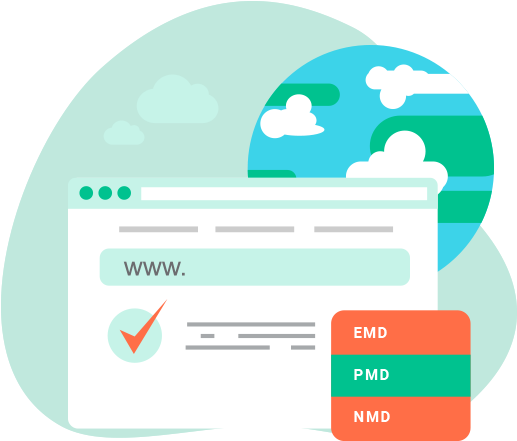
Nothing revolves in the SEO universe without a strategy! We feel you’ve got that fact now.
Anchor text is a vital part of SEO and that’s why it’s no different from the other aspects.
You need a proven strategy when it comes to creating Anchor Texts.
In this chapter, we’ll go through the nitty-gritty of Anchor Texts and hand out the lucrative anchor text tactics that would help enhance the quality of your anchor text profile and keep it spam-free.
Here’s an overview of the lessons we’re going to cover in this chapter:
- 3.1 Are You Using an EMD, PMD, or NMD Domain?
- 3.2 Anchor Text Co-Occurrence
- 3.3 Anchor Text Cycling
- 3.4 Using Variations of Exact Match Anchor Text
- 3.5 Turn SEO Title Tag into an Anchor
- 3.6 Anchor Text According to Link Type
- 3.7 URL-Based Anchor Optimization
- 3.8 Variety in Naked URL Anchor Pattern
- 3.9 Grammar Over SEO
- 3.10 Synonyms
- 3.11 Long-Phrase Anchor
Are You Using an EMD, PMD, or NMD Domain?
The domain type will have an enormous amount of effect on your anchor text profile!
Putting keywords into your root domain seems lucrative at first, but this shortcut can devastate your anchor text and link building strategy in more ways than one.
It’s quite simple : having keywords in the domain itself make the anchor text spammy before it’s built!
For instance, if you have an SEO agency in Boston, you cannot simply come up with seoagencyinboston[dot]com or bostonseoagency[dot]com and hope it to rank well in the long run!
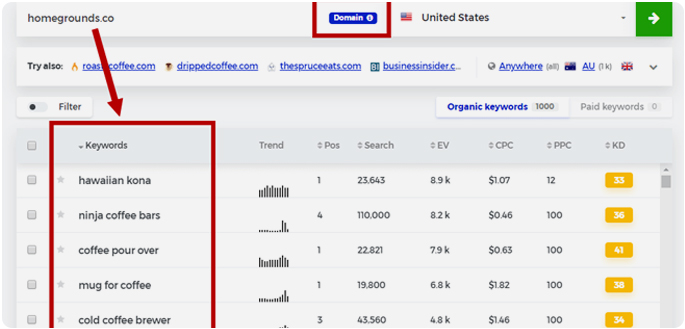
This is a spammy practice that was used in the early days of SEO. With the advancements and strict algorithmic updates of Google, the whole thing has taken a turn upside down!
Thus, when deciding a strategy for building anchor texts, it’s good to know about how your root domain can affect the result.
For knowing that, you should first know about EMD, PMD, and NMD domains.
EMD (Exact Match Domain)
When you have the exact targeted keyword placed in your domain, that’s an EMD or Exact Match Domain.
Example :
- Infographic Anchors
- Banner Anchors
- Image Anchors within an Article
PMD (Partial Match Domain)
Your root domain is considered PMD when it has all the words of your targeted keyword along with some additional words or it contains a part of the targeted keyword or a part of the targeted keyword along with some additional words.
Example :
-
Domain : seoinkansas[dot]com or
bestseocompanyinkansas[dot]com - Targeted Keyword : SEO Company in Kansas
NMD (Non-Match Domain)
Quite easy to guess, NMD or Non-Match Domain is the one that does not comprise any part of your targeted keyword.
Example :
- Domain : digitaloutreach[dot]net
- Targeted Keyword : Link Building Tools
The bottom line is you cannot make a lot of use of the EMD or PMD and hope for a quicker result that stays for long.
This strategy is dead for long and it can get you penalized before you even realize!
Many individuals feel that the domain types don’t have any effect on the anchor text but that’s not true! Because the anchor text ratio would vary greatly according to the type of domain it is being linked to.
Do you really think that there’d be no difference between an anchor leading to an EMD and an anchor leading to an NMD?
While EMD is a strict NO in today’s SEO landscape, PMD is still okay. But in an inexperienced hand, it can backfire as well!
That’s why you need to be strategic with your domain type.
Are You Using an EMD, PMD, or NMD Domain?
The domain type will have an enormous amount of effect on your anchor text profile!
Putting keywords into your root domain seems lucrative at first, but this shortcut can devastate your anchor text and link building strategy in more ways than one.
It’s quite simple : having keywords in the domain itself make the anchor text spammy before it’s built!
For instance, if you have an SEO agency in Boston, you cannot simply come up with seoagencyinboston[dot]com or bostonseoagency[dot]com and hope it to rank well in the long run!

This is a spammy practice that was used in the early days of SEO. With the advancements and strict algorithmic updates of Google, the whole thing has taken a turn upside down!
Thus, when deciding a strategy for building anchor texts, it’s good to know about how your root domain can affect the result.
For knowing that, you should first know about EMD, PMD, and NMD domains.
EMD (Exact Match Domain)
When you have the exact targeted keyword placed in your domain, that’s an EMD or Exact Match Domain.
Example :
- Infographic Anchors
- Banner Anchors
- Image Anchors within an Article
PMD (Partial Match Domain)
Your root domain is considered PMD when it has all the words of your targeted keyword along with some additional words or it contains a part of the targeted keyword or a part of the targeted keyword along with some additional words.
Example :
-
Domain : seoinkansas[dot]com or
bestseocompanyinkansas[dot]com - Targeted Keyword : SEO Company in Kansas
NMD (Non-Match Domain)
Quite easy to guess, NMD or Non-Match Domain is the one that does not comprise any part of your targeted keyword.
Example :
- Domain : digitaloutreach[dot]net
- Targeted Keyword : Link Building Tools
The bottom line is you cannot make a lot of use of the EMD or PMD and hope for a quicker result that stays for long.
This strategy is dead for long and it can get you penalized before you even realize!
Many individuals feel that the domain types don’t have any effect on the anchor text but that’s not true! Because the anchor text ratio would vary greatly according to the type of domain it is being linked to.
Do you really think that there’d be no difference between an anchor leading to an EMD and an anchor leading to an NMD?
While EMD is a strict NO in today’s SEO landscape, PMD is still okay. But in an inexperienced hand, it can backfire as well!
That’s why you need to be strategic with your domain type.
Fixing Over-Optimized Anchor Texts

Do you know what is the most common concerns (or issues) that we hear regarding Anchor Texts?
Penalty for Over-Optimization of Anchor Texts!
Fear not! We are going to discuss the proven tricks to fix the over-optimized anchor text in the following lessons:
- 4.1 Commercial Anchor Link Removal (from Spammy Sites)
- 4.4 Anchor Text Dilution
- 4.5 Penalty Recovery by 301 Redirect
Before Everything Else…
Let us clear the cloud – almost nobody has ever been penalized only because of over-optimized anchor text. If you’re penalized, you’ve many things went wrong!
If you take a look at Google Penguin and Panda algorithms, it would be evident that anchor text is one factor of the penalization terms while there are many others to take care of as well.

As we said, poor-quality links, content, and UX are also the reasons for being penalized along with the over-optimized anchor texts.
But these are not today’s focus; we’ll quickly move to the part where we’ll explain how to fix the over-optimized anchors.
Commercial Anchor Link Removal (from Spammy Sites)
Never try to bulk-remove all your backlinks!
Every link you remove from your link profile makes an impact on the website authority of yours EVEN IF THE LINK IS AWFUL.
Rather than removing the links, your focus should lie on replacing the poor links with high-authority links.
Have you checked the most popular posts?
If you want to know the topics that would give you instant approval for writing a guest post, checking out the most popular posts on the site is perhaps the smartest thing you can do!
And you must be wondering how to find them!
Well, you’ll find the sidebars with such popular articles. You can make a list of those articles to study.
Quick Facts: Removing links never recover lost ranking, it decreases the website authority!
Commercial or Keyword-Rich anchors are best to be used on the powerful link sources i.e. the authoritative platforms.
But humans make mistakes and you might have builta keyword-rich anchor on a low-quality website! But you need to get rid of it.
And it seems like you’ve got two options to go for:
- Delete those links
- Disavow those links (If deletion is not possible)
Remember, you should only opt for removing links from the spammy sites. Deleting links from all the sources would delete the links from authoritative ones as well, therefore, decreasing your website authority!
Anchor Text Dilution
Never try to bulk-remove all your backlinks!
Every link you remove from your link profile makes an impact on the website authority of yours
Rather than removing the links, your focus should lie on replacing the poor links with high-authority links.
Have you checked the most popular posts?
If you want to know the topics that would give you instant approval for writing a guest post, checking out the most popular posts on the site is perhaps the smartest thing you can do!
And you must be wondering how to find them!
Well, you’ll find the sidebars with such popular articles. You can make a list of those articles to study.
Quick Facts: Removing links never recover lost ranking, it decreases the website authority!
Commercial or Keyword-Rich anchors are best to be used on the powerful link sources i.e. the authoritative platforms.
But humans make mistakes and you might have builta keyword-rich anchor on a low-quality website! But you need to get rid of it.
And it seems like you’ve got two options to go for:
- Delete those links
- Disavow those links (If deletion is not possible)
Remember, you should only opt for removing links from the spammy sites. Deleting links from all the sources would delete the links from authoritative ones as well, therefore, decreasing your website authority!


